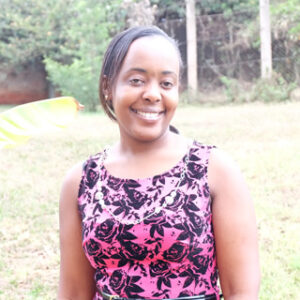- by AATF Africa
My name is Daniel Ochieng Teti and I am a small scale farmer in Kisumu North district in Kenya. I grow various food crops such as maize, beans and millet. Growing maize is my most important farming activity as it is my family’s main source of food as it is for most families in Kenya. One of the challenges that farmers in this area have been facing in maize production is the infestation of the Striga weed, which is commonly known as Kayongo in our local language dholuo. For a long time I used to grow a local maize variety we call Nyamula. However, it used to be affected severely by Kayongo. In 2009, William Bodo who works with Nyanza Centre for Destitute (NCD) introduced a maize variety known as Western Seed 303 or StrigAway Imazapyr Resistant (IR) maize which he said can control Striga. NCD is a community based organisation that works in the areas of agriculture and health. I saw a big difference on my maize farm. My maize yields increased and the amount of Striga weeds on my farm decreased. Previously from about a half-acre piece of land I would harvest half a bag of maize. This was barely enough to feed my family of five children in addition to my wife and I. When I plant IR maize I now get about five bags from the half a bag I previously got. I am very grateful for this technology. When one follows the instructions for growing the IR maize there is guaranteed harvest unless the rains fail like they sometimes do.
Previously before adopting IR maize I used to plant my maize and beans at the same time and even sometimes in the same hole. With IR maize that is not advised. The instructions state that one should not mix IR maize with other seeds. In addition, one is supposed to wash their hands after planting the maize seed and before touching or planting other seed like beans. But sometimes I like to experiment and do things contrary to instructions. I did not understand or believe the instructions and so one time I planted both my IR maize and beans together. I will never do that again – the beans did not germinate at all. Since then I follow planting instructions for good results. I learnt my lesson as that season I did not have any beans to harvest. From this experiment I got to understand that the powder that is used on the IR maize affects other seed apart from that particular maize seed – that I need to plant my beans on a separate row from the maize.
I have seen the IR maize reducing the Striga weed on my farm. I actually have none while my brother’s farm that is just nearby has plenty. One would think he has a flower farm. He is cautious about trying new technologies but I am trying to convince him to adopt IR maize and I hope he will so that he can be food secure like me. I don’t have to buy maize to feed my family.
My family and I like eating the IR maize especially when roasted or boiled. It is very sweet. The flour is also heavy and is good for Ugali (stiff mixture made from maize flour). It also yields more grain when compared to other maize varieties and it matures in a shorter time – three and a half months. I can say it has guaranteed food for my family. Apart from farming I run a bicycle repair shop at the shopping center. The proceeds I get from the shop are not enough to cater for my family’s needs. So when I have enough maize to meet my family’s food needs it is one problem solved and I can use the money from my business to cater for other needs like school fees and healthcare. I can confidently say I have no food supply concerns in my home since maize is our main food.



















































































